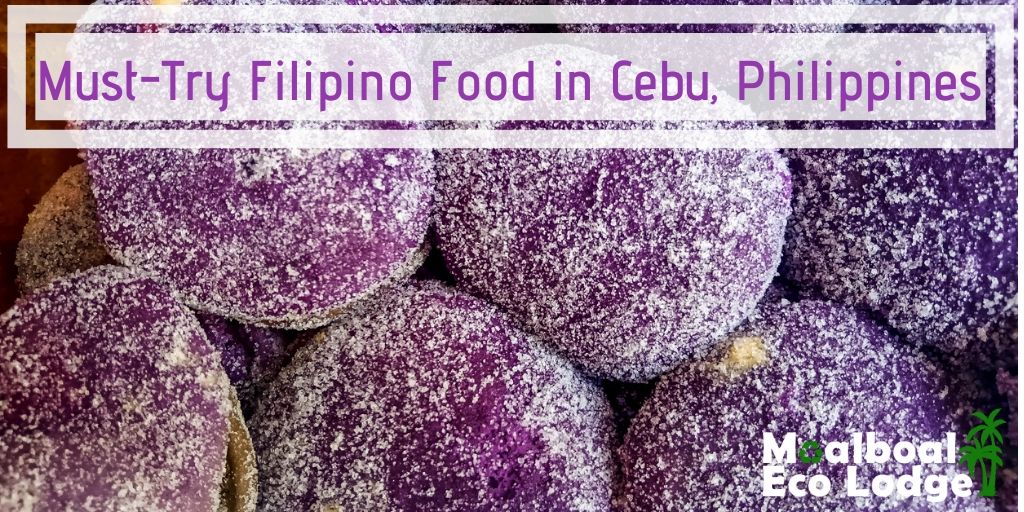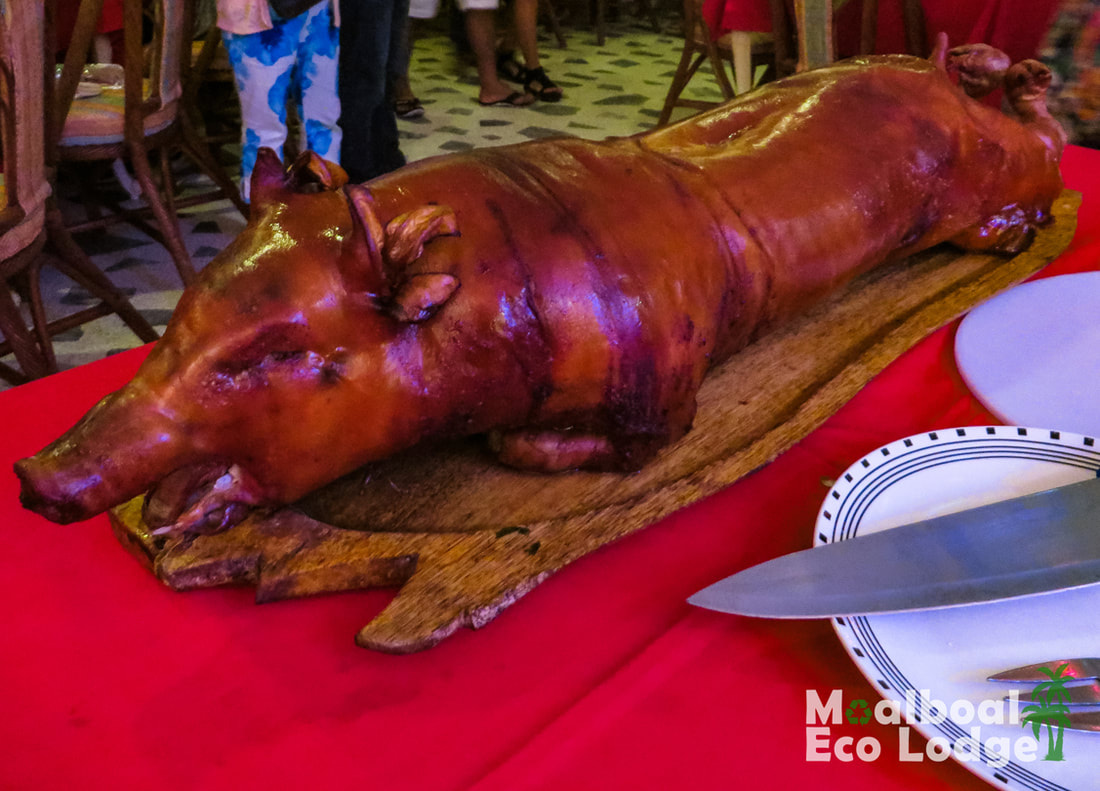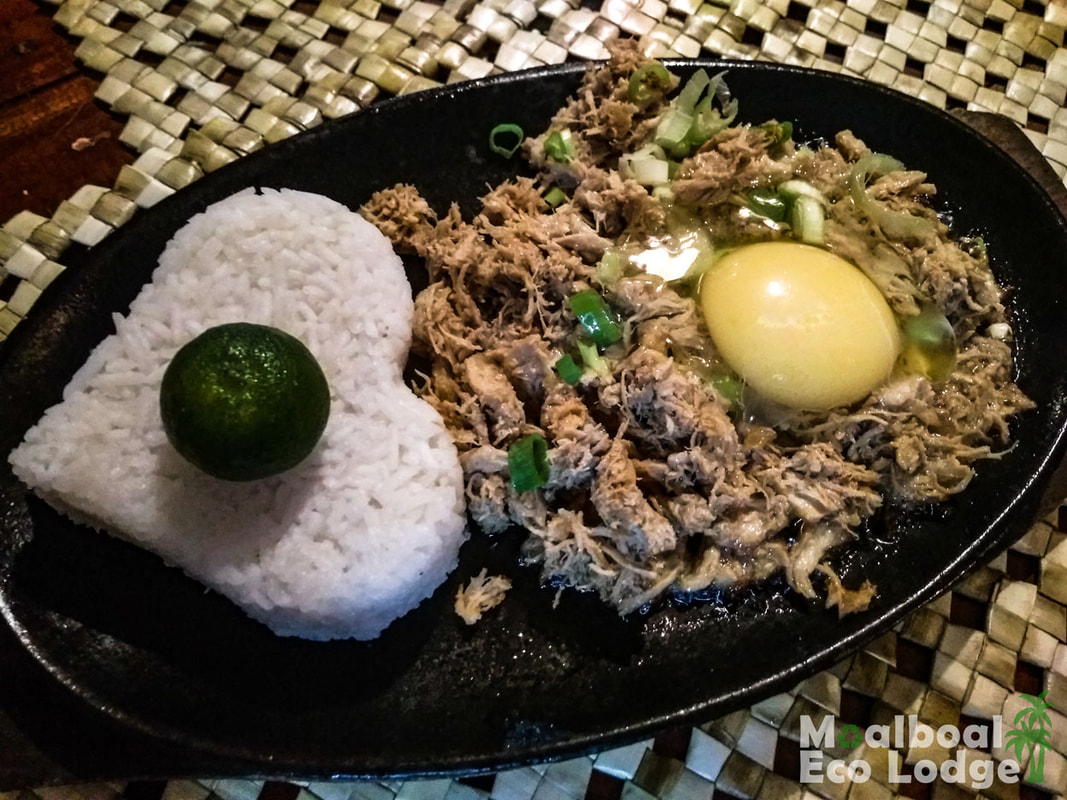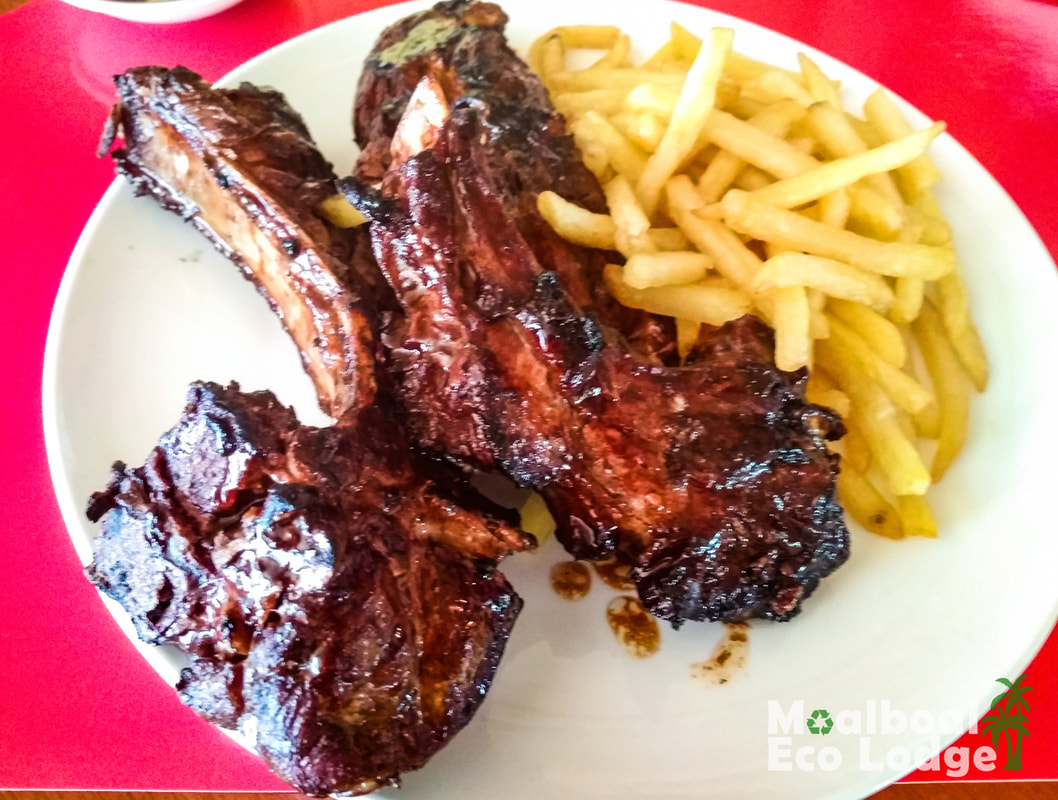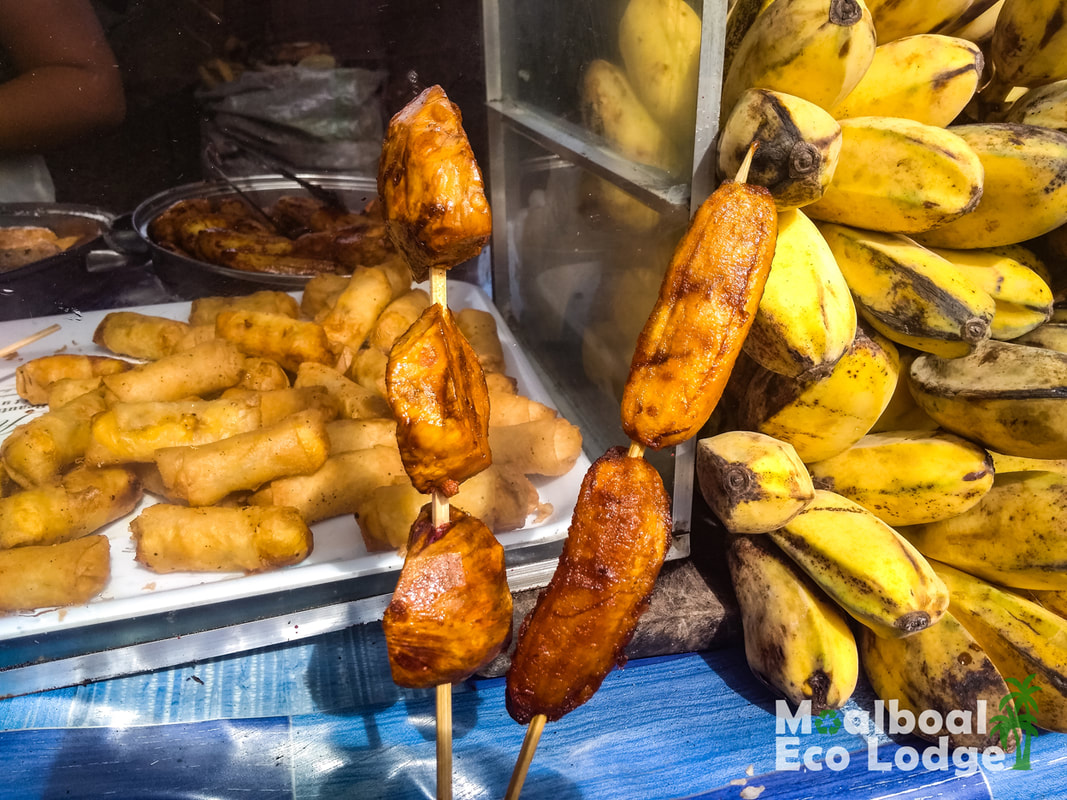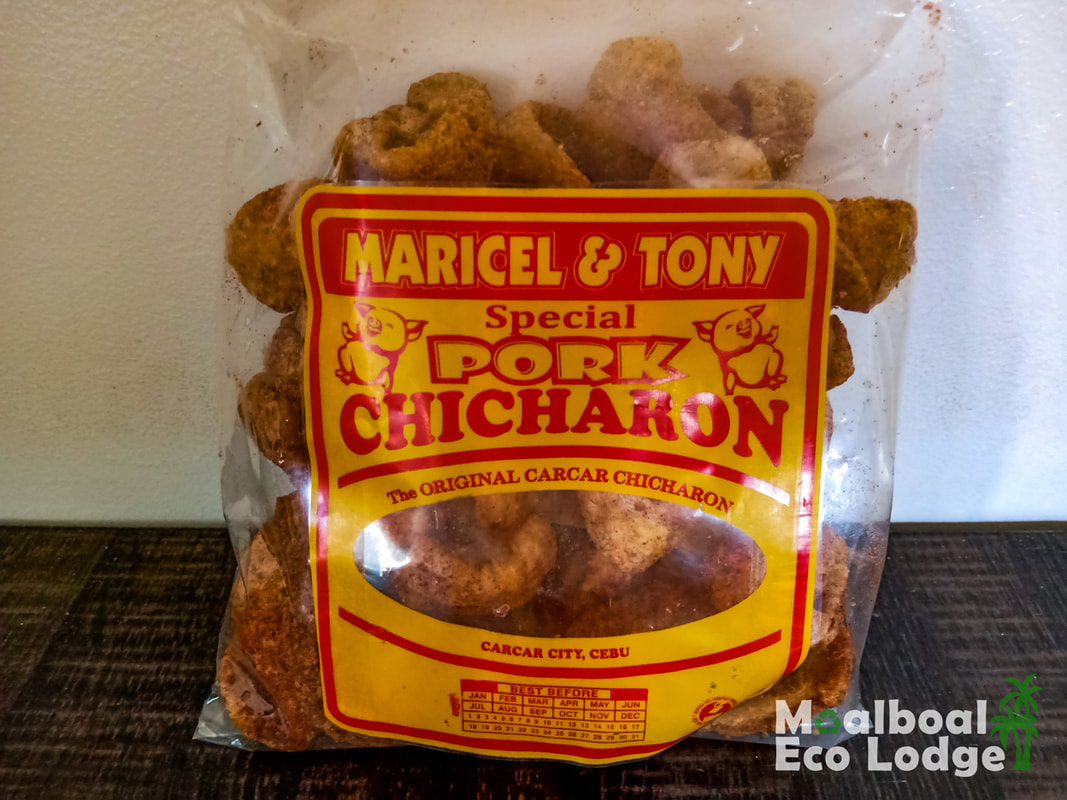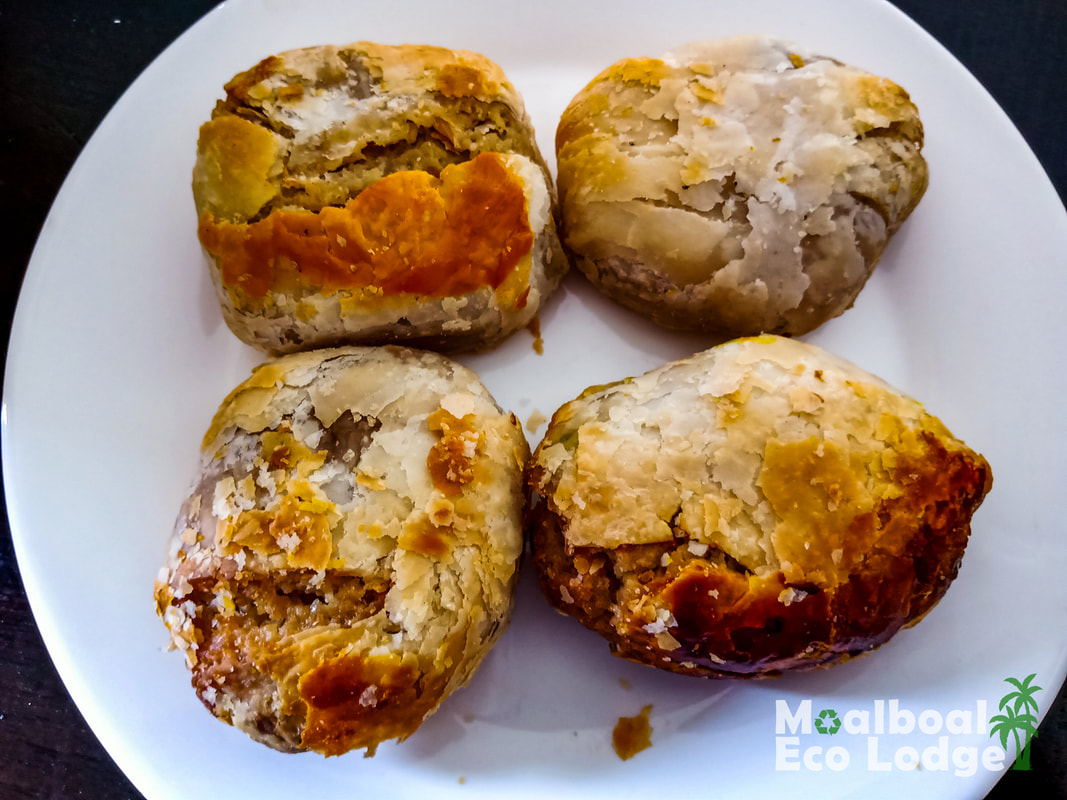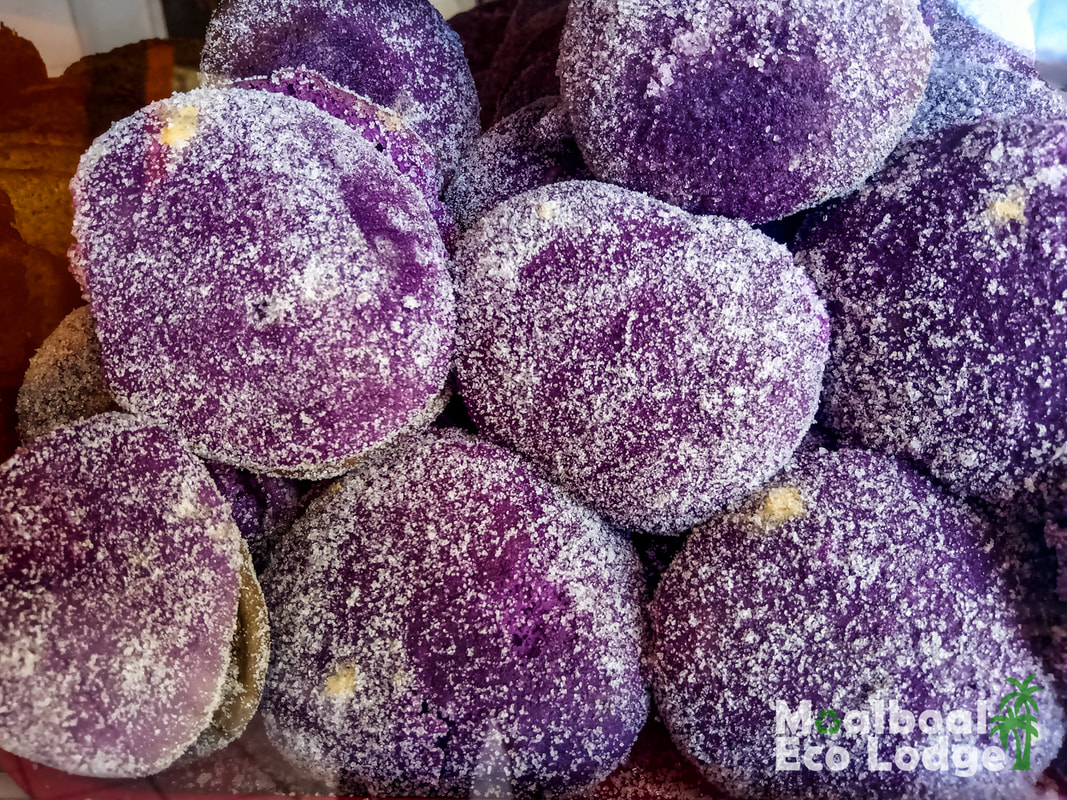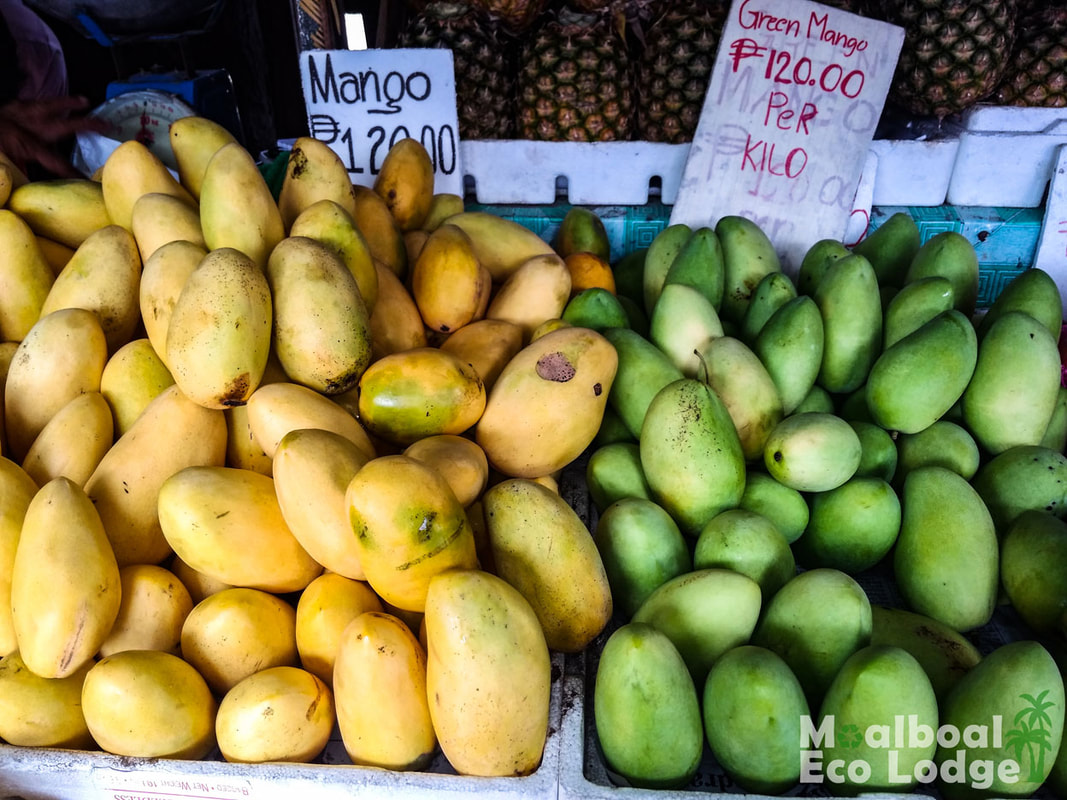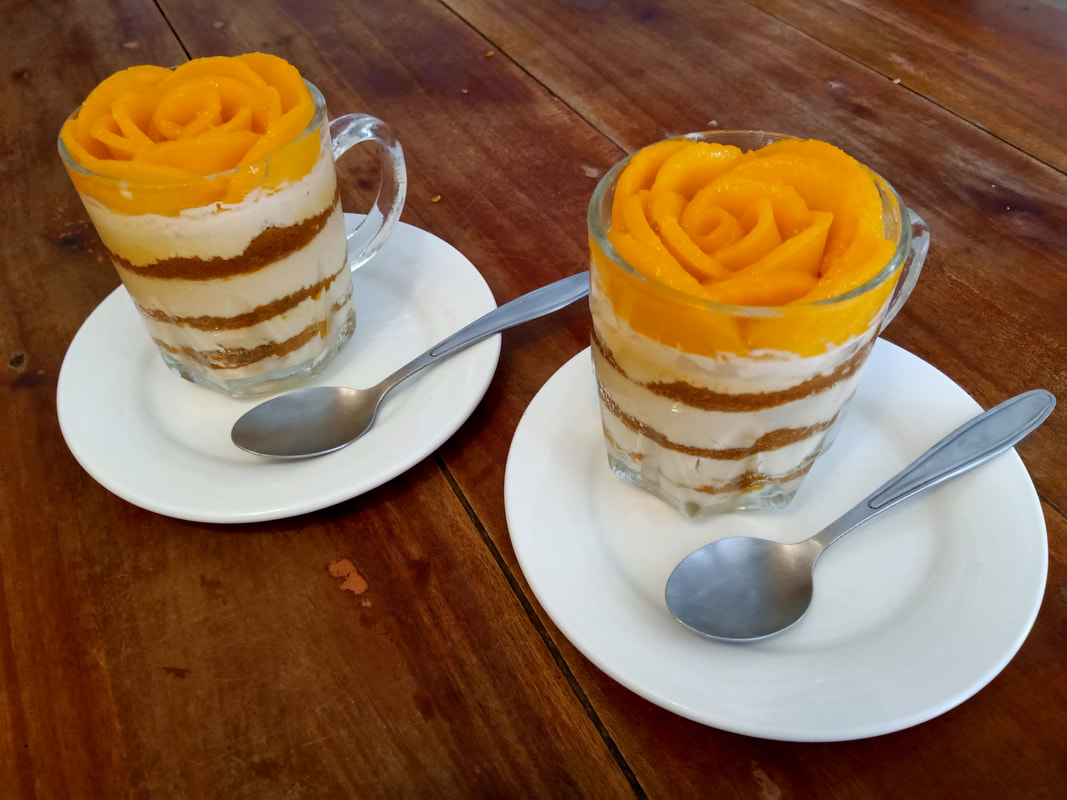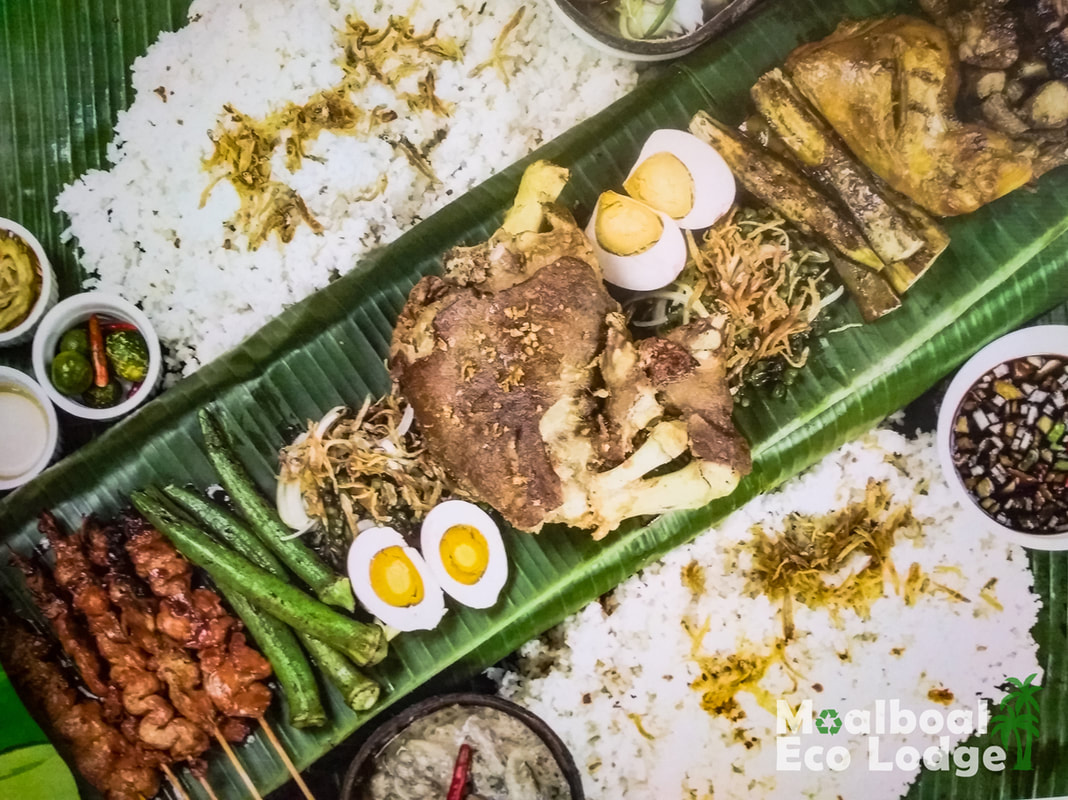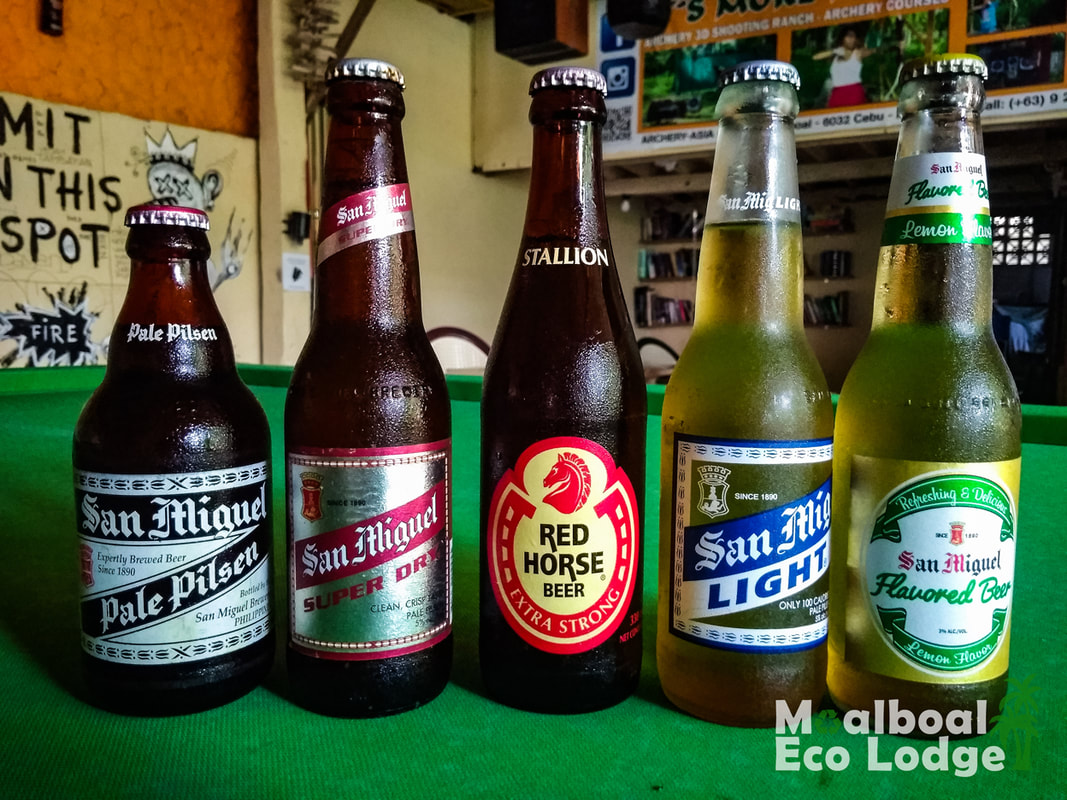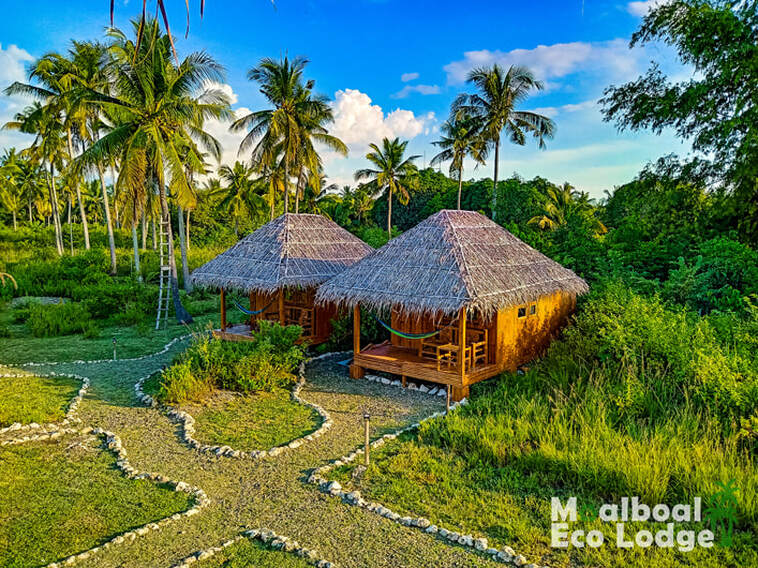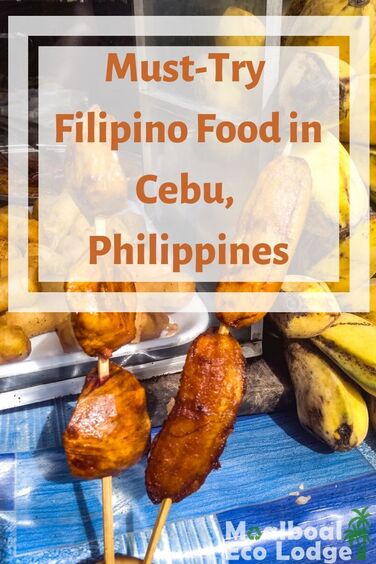|
Some people believe that food in the Philippines doesn’t have any identity, and that there are no “local Filipino dishes”. They are wrong, or at the very least they are mistaken, because Filipino Food has been dubbed “the next big thing in the Culinary world”.
Colonised by Spain for 333 years, Filipino food draws influences from Spain as well as Asia, and locals know how to put their own spin on a dish. Pork lovers are in for a treat, as this meat is found in a variety of dishes, and people with a sweet tooth will also not be disappointed. Without any further ado, Moalboal Eco Lodge share our list of the must-try Filipino Food in Cebu, Philippines.
Lechon
Admittedly this one isn’t for vegetarians or vegans, but this Filipino dish is the most famous in Cebu. Anthony Bourdain the chef and travel documentarian proclaimed Lechon as the “best pig ever” when he visited Cebu in 2008. It is widely considered that Cebu Lechon is the best in the Philippines. Lechon means “suckling pig” in Spanish and this dish is usually served at special occasions such as birthdays, festivals and of course Christmas. A whole young pig is stuffed with a mixture of herbs and spices, then slow roasted over hot coals/charcoal for around eight hours until the skin is crispy. Note: If you see Lechon Manuk, this is the street version of roasted chicken, so the word “Lechon” is then translated to mean roasted.
Pork, Chicken or Vegetable Sissig
This is my personal favourite, I always order Chicken Sissig, but if you are vegetarian or Vegan, vegetable sissig works. This classic Pinoy dish comes out of the kitchen sizzling on a hot plate, often served with a freshly cracked egg to be stirred in whilst hot. No part of the animal is wasted in the Philippines, so pork sissig is made from chopped up parts of the pig’s face. Adodo Chicken or Pork Adobo is probably the most famous dish to try in the Philippines. Adobo means “marinade” in Spanish so it will vary from island to island, and eatery to eatery. Meat is marinated in a combination of vinegar, salt, garlic, pepper, soy sauce and various other spices. Historically, this was a practical way to preserve meat without refrigeration.
BBQ
The Philippines is a tropical archipelago, so BBQ and sunshine go hand in hand. Filipinos have mastered the humble BBQ and you can either opt for spare ribs, or just buy a few satay sticks from roadside sellers. In Moalboal opposite San Juan church and shool, there is a rotisserie chicken stand where you can buy a deliciously succulent whole roasted chicken (known as Lechon Manuk) for P200. Balut Egg If you are the adventurous traveller and have tried some of the crazy foods like insects in Cambodia, the Balut egg is the next level. Controversially, a Balut egg is a developing duck embryo which is boiled and served from the shell. It’s sold from street vendors from small white coolers. Once the egg is laid, it is incubated between 14-21 days giving the foetus a chance to grow before it is turned into a controversial local delicacy (some say aphrodisiac!). It is said the best time to eat a Balut is when the egg is 17 days old, and after you have consumed a few Pilsner’s for Dutch courage! If eating an unusual local delicacy is on your bucket list - then why not give it a go!
Banana Q
Now this is a much tastier street food snack! It’s a banana on a stick coated in sugar then caramelised, delicious! It’s my favourite quick eat.
Chicharon
Chicharon’s are a snack and can be found all over Cebu and the Philippines. Car Car is known as the Chicharon capital, so if you catch the bus from Cebu City to Moalboal, grab a pack from sellers boarding the bus advertising “Charon Charon”. Chicharons are crispy pig skins, a crunch on every bite! If you like pork crackling or pork scratchings, you need to try Chicharon.
Filipino Pastries
Bakeries are everywhere and all serve inexpensive tasty snacks. Hopia is a Filipino pastry filled with either munggo (dark beans) or buko pandan (coconut). Hopia was introduced by Chinese immigrants, and I love them! Piaya are flat unleavened bread filled with muscovado sugar. In Negros the “sugar capital of the Philippines” it’s a very popular snack, and they are delicious, especially when served warm.
Ube
If purple is your favourite colour and you have a sweet tooth, you will think all your Christmases have come at once! Ube (pronounced oo-bay) is boiled and mashed purple yam served as a dessert. Ice cream, cookies, cakes and my favourite – ube hopia. Anyone for another helping of purple ice cream?
Mango
Mangoes in the Philippines are world class. Literally! The distinctive light yellow Carabao Mangoes are the sweetest in the world, and have even been served at Buckingham Palace the White House. Buko – The Philippine Coconut In the Philippines, a fresh coconut is called Buko and you will see Buko juice sold everywhere. Every part of the coconut is used, from the deliciously hydrating coconut juice, to the sweet flesh scooped out with a spoon. Don’t forget to use your own reusable straw and #SayNoToPlastic. The Philippines produces 153,532,000 Tonnes of coconut each year and is the second highest producer in the world after it was overtaken by Indonesia. Moalboal Eco Lodge is located in a field of coconut palms which you will also see dotted along beachfronts. Lush plantations are visible throughout the Country, and the coconut palm known as “The Tree of Life”, is used in so many ways. The wood is called Coco Lumber and is used to make building structures and furniture. Coconut shells are turned into souvenirs, smoothie bowls and spoons, and of course there is coconut oil used in cooking, for beauty products and medicinal purposes.
Mango Float
This is my absolute favourite dessert. If you are from a Western Country, you may think a Mango Float is an ice cream dish but it’s not. Made from condensed milk, graham crackers and of course the famous sweet Filipino mango, if you see one on a menu – give it a go! My two favourite places for Mango Float (and believe me, I have tried everywhere!), are Kuan Bar and Venz Kitchen.
Boodle Fight
This isn’t the Pinoy word for a food fight, instead it’s community free-style eating using just your hands. This tradition started in the Philippine military where a big pile of food was served in the middle of a long table in the mess hall. Hungry solders would eat using their hands and the “fight” refers to the act of grabbing and eating as much as they could before it ran out. This method of eating showed equality and brotherhood within the military. Today, the ethos is the same; Filipino food is served on a banana leaf in the middle of the table, and you simply dig in. There are no plates, no utensils, it’s liberating. Our friends at Island Girl B&B run boodle fight nights for P350 per person, they are also the only place so far in Moalboal who have Filipino Cooking Classes.
San Miguel Did you know that San Miguel is a Philippine Brewery and not Spanish? There are a few beers to choose from: San Miguel Pilsner known simply as “Pilsner” comes in a short brown bottle San Miguel Light known as SML is low in calories, not alcohol content Lemon San Miguel is exactly as it says – a lemon flavoured beer Red Horse – for a hangover that kicks like a mule this strong beer has an ABV of 6.9% Everywhere serves San Miguel so try them all and choose your favourite. Yo Ho Ho and a Bottle of Rum 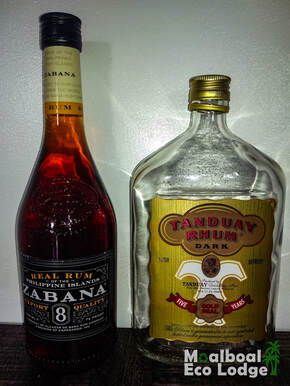 Rum is the most popular spirit in the Philippines Rum is the most popular spirit in the Philippines
Rum is so popular throughout the Philippines, in some places it’s cheaper to drink this spirit than the soft drink it is served with. Tanduay is the cheapest, most popular and the national favourite, however the discerning run connoisseur (and people who don’t really like rum) will probably prefer Zabana.
Where to stay in Moalboal
Moalboal Eco Lodge is the perfect place to stay if you love nature, wish to be close to amenities, but value a good night's sleep. Please read our COVID-19 Care page for more information regarding your safety. Nestled in amongst palm trees, bamboo and coconut trees, Moalboal Eco Lodge have Bamboo Nipa Huts suitable for solo travellers, couples and friends. There are private rooms and a spacious 4-bed dormitory. Bicycles are for hire if you wish to slow travel in the most environmentally friendly way, or you can rent a scooter. Check out our rooms! Visit our Eco Shop* for your plastic free, zero waste, palm oil free products for use every day! (*10% from every purchase is donated to Moalboal Dog Rescue)
For help regarding travel and Visa requirements, visit our Travel Information page
Staying in Cebu? Check out or Day Trips from Moalboal Series
Kawasan Falls, Badian Basdaku “White Beach”, Moalboal Mantayupan Falls, Barili Lambug Beach, Badian Montpellier Waterfall, Alegria Taginis Falls & Budlot Spring Simala Shrine Castle Church, Sibonga Heading to the Philippines? Check out these related posts! Bucket List Ideas and Experiences in the Philippines Fun Facts about the Philippines Is Oslob Whale Shark Watching Ethical? Jeepney Street Art in Moalboal Things You Should Know Before Visiting the Philippines 28 Things to Do in Moalboal, Cebu Do you want to travel responsibly? Sustainable Travel: How to be a Responsible Tourist 12 Plastic Free & Zero Waste Travel Tips During Coronavirus Plastic Free & Zero Waste Toiletries: Space Saving Travel Essentials
Pin this post for future reference!
1 Comment
Mr. Fun
2/2/2021 03:02:23 pm
Great article, I miss everything in Cebu so much, I hope to have a chance to go again
Reply
Your comment will be posted after it is approved.
Leave a Reply. |
Archives
October 2023
Categories
All
|

